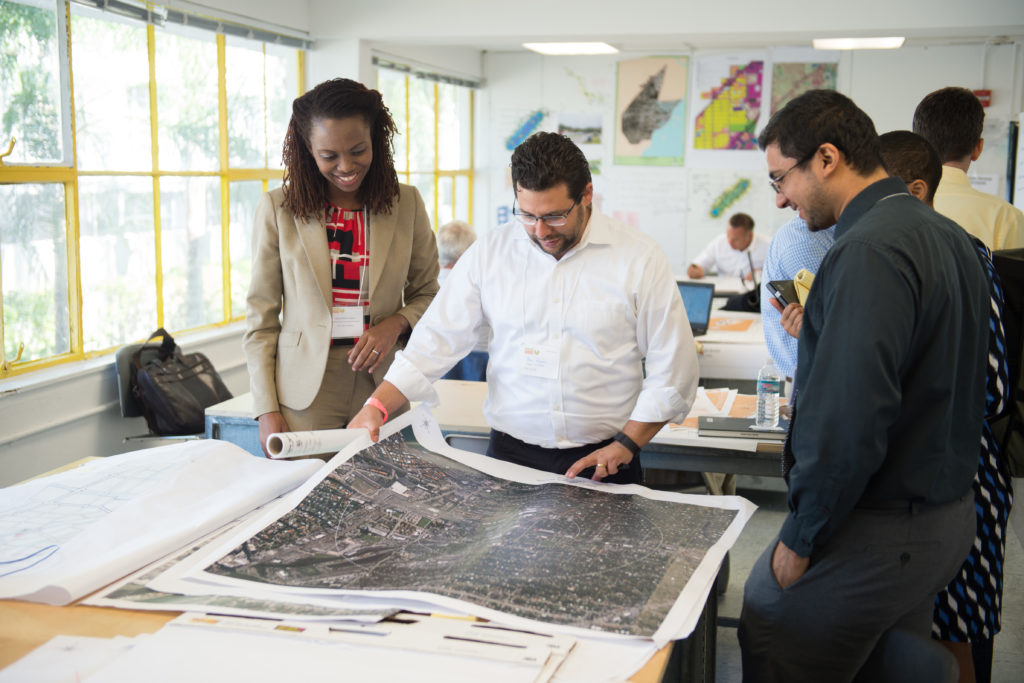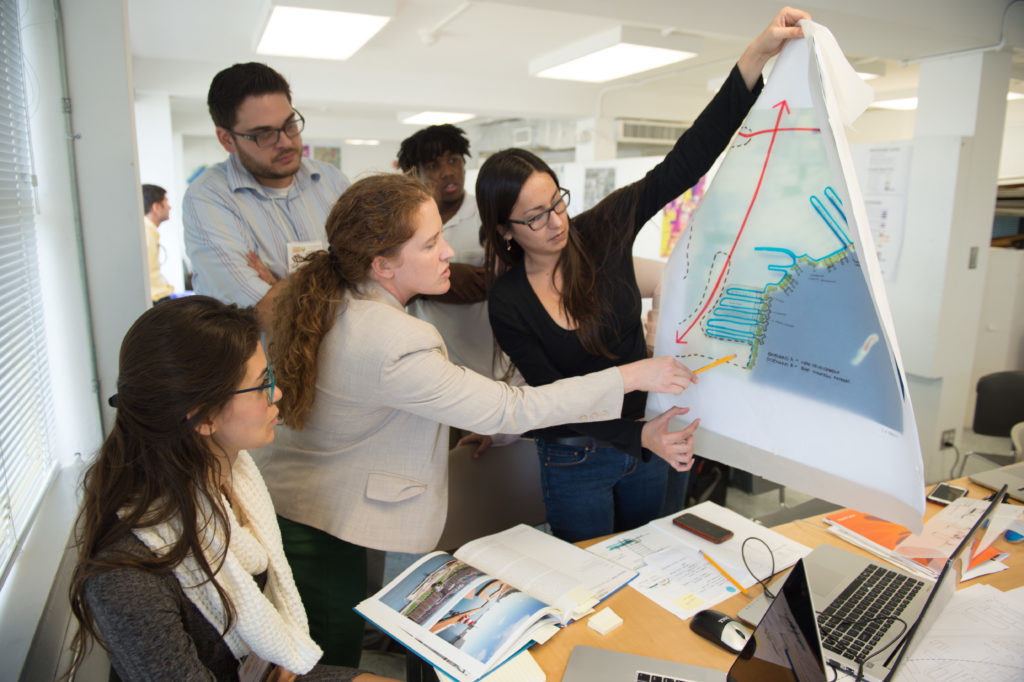Engaged. Dedicated. Involved. These three words describe the participants in the Southeast Florida Regional Climate Change Compact’s Resilient Redesign III on November 14-17 at the University of Miami School of Architecture.
Classrooms were buzzing with design professionals, students from the University of Miami and Florida Atlantic University, and experts from the private sector, academia, and NGOs. These participants all volunteered their time to collaborate with public sector practitioners to address the climate change challenges in three areas of Southeast Florida: Arch Creek (Miami-Dade County), Shorecrest (City of Miami) and Lower Matecumbe Key (Village of Islamorada).
This event was the third of its kind. We started back in 2014, when the Dutch Consulate asked the Compact to host a design charrette around the severe flooding in Southeast Florida caused by sea level rise, high(er) tides and extreme rain events. In the Netherlands, a country where 26% of land sits below sea level and 50% is three feet elevation or less, the concept of living with water had been perfected over the centuries.

This year’s four-day event began with participants donning their flip flops and rubber boots to wade through the brackish water covering the affected site areas. The streets turned to canals as the tours got underway during a King Tide. The high levels of water on many streets interrupted city services, cutting residents off from leaving their homes or from their usual routes.
The second day brought about discussions on what sorts of design could address flooding, overstressed infrastructure, improve residents’ quality of life, and improve economic opportunities. This was no easy task, yet the teams worked late into the nights, developing ideas with input from experts in hydrology, land-use law, infrastructure and natural systems.
In addition to living with water, all teams were challenged to integrate nature and natural systems into the designs. In the past, nature was considered something to be bulldozed over and forced to disappear with development in Florida. That type of design approach contributes to the problems today, such as developed tracts in what was once wetlands or riverbeds.
Charrette leader Sonia Chao, Director of the University of Miami’s Center for Urban and Community Design, urged participants to develop designs that allowed for greater resilience over time. This involved creating short-term, mid-term and long-term designs, which heledhelps ensure that short-term solutions were mindful of mid-term, and similarly for the mid-term considerations to not inhibit the long-term goals. By incorporating legal options into the design choices, short-term considerations become more feasible and created the opportunity for long-term natural systems solutions.
The final Resilient Redesign III designs will be shared in a report available early 2017 on the Compact website.
This sidebar is by ISC Senior Budget and Operations Officer Jeff Fournier.
As the Senior Budget and Operations Officer for ISC’s U.S. team, my top priority is making sure our program staff have what they need to deliver excellent on-the-ground technical assistance and leadership. I usually do this from the confines of our Montpelier office, but this all changed in November when I left the bitter cold of Vermont to support the Southeast Florida Regional Climate Change Compact’s Resilient Redesign III at the University of Miami’s School of Architecture
When I left progressive Vermont for the purple, now red state of Florida, I was feeling a bit depressed about the future of climate work in the U.S. post-election. I was also acutely aware of the climate challenges in Florida: rising sea levels, increased flooding and suffering communities. I braced myself for a dispiriting week in Southeast Florida.

What I found instead was an amazing group of true climate champions and leaders committed to local action. In the face of daunting political and environmental challenges, this group of students, city leaders and private sector design professionals collaborated with creativity and urgency to imagine a future that preserves and enhances the quality of life in Southeast Florida for all citizens. Their designs transformed flooded neighborhoods into public open space for community events and markets. They worked to develop plans that would nudge folks out of low-lying, flood prone areas in the long-term, while ensuring their safety in the short-term through regional policy. City planners were able to step out of the confines of budgets and policy to a future where anything was possible. Their ability to set aside the bleak reality and imagine a better future was inspirational.
I carried this energy back with me to Vermont and am still thriving off of it a month later. We haven’t stopped progressing in climate action. We’re already busy working out new ways to face obstacles head on.
